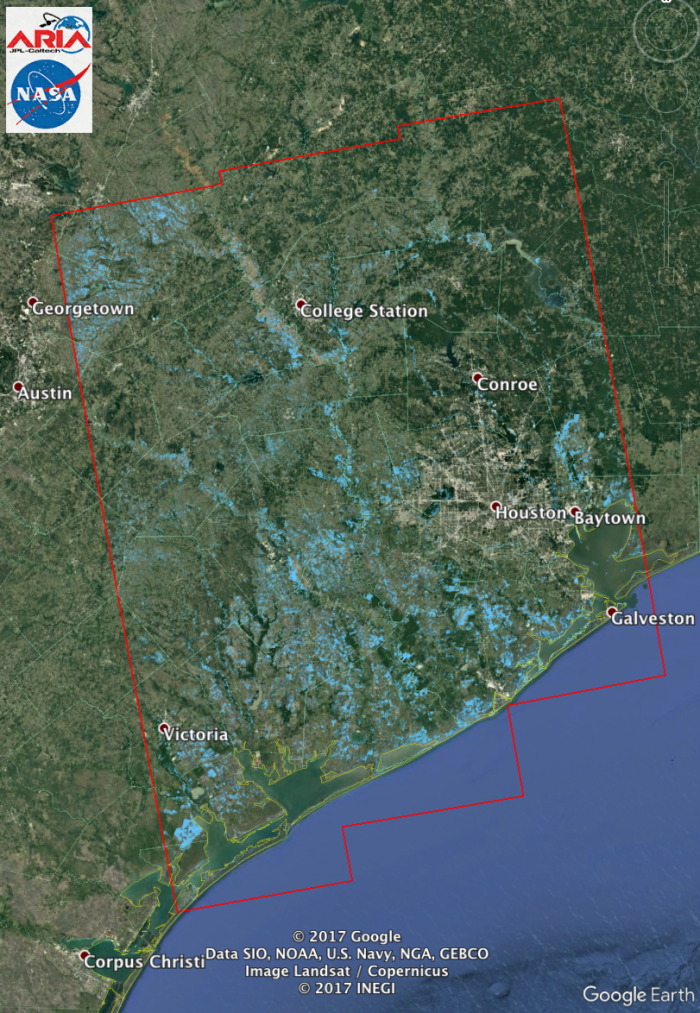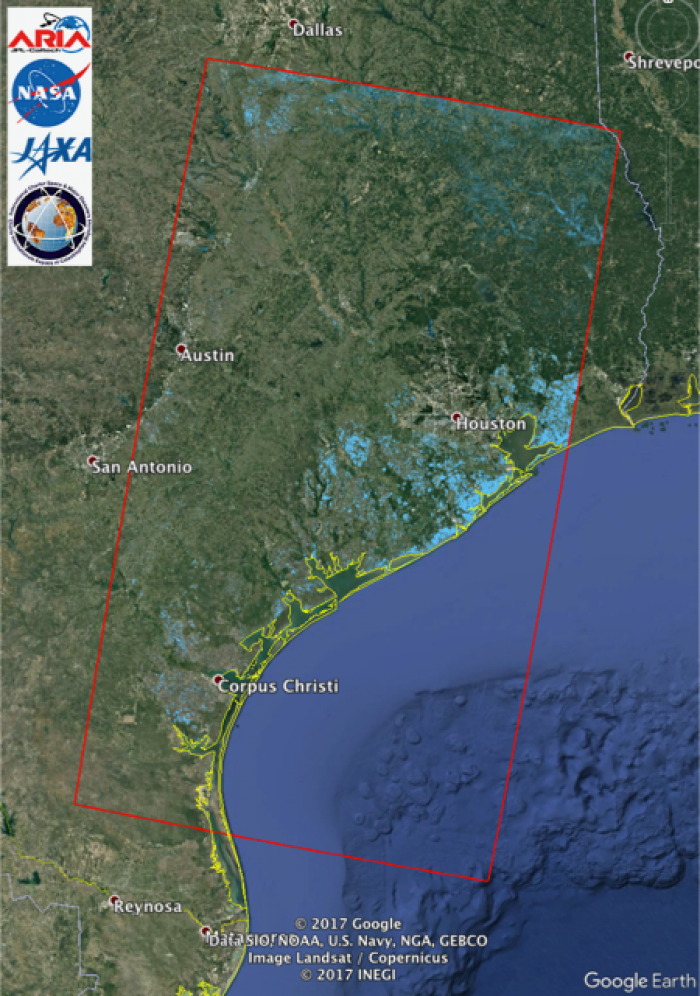The Advanced Rapid Imaging and Analysis (ARIA) team at NASA's Jet Propulsion Laboratory in Pasadena, California, created this Flood Proxy Map depicting areas of Southeastern Texas that are likely flooded as a result of Hurricane Harvey, shown by light blue pixels. The map is derived from synthetic aperture radar amplitude images from the European Space Agency's (ESA) Sentinel-1 satellite, taken before (August 5, 2017) and after (August 29, 2017) Hurricane Harvey made landfall. The map covers an area of 155 miles x 211 miles (250 km x 340 km). Each pixel measures about 33 yards x 33 yards (30 m x 30 m). Local ground observations provided anecdotal preliminary validation. Also cross-validated with ARIA ALOS-2 flood proxy map v0.2. This flood proxy map should be used as guidance to identify areas that are likely flooded, and may be less reliable over urban areas. Sentinel-1 data were accessed through the Copernicus Open Access Hub. Contains modified Copernicus Sentinel data 2017.
The Advanced Rapid Imaging and Analysis (ARIA) team at NASA's Jet Propulsion Laboratory in Pasadena, California, created this Flood Proxy Map depicting areas of Southeastern Texas that are likely flooded as a result of Hurricane Harvey, shown by light blue pixels. The map is derived from synthetic aperture radar amplitude images from the Japan Aerospace Exploration Agency's (JAXA) ALOS-2 satellite, taken before (July 30, 2017) and after (August 27, 2017) Hurricane Harvey made landfall. The map covers an area of 220 miles x 400 miles (350 km x 640 km). Each pixel measures about 55 yards x 55 yards (50 m x 50 m). Local ground observations provided anecdotal preliminary validation. Also cross-validated with ARIA Sentinel-1 flood proxy map v0.2. This flood proxy map should be used as guidance to identify areas that are likely flooded, and may be less reliable over urban areas. ALOS-2 data were accessed through the International Charter. Derivative Work Product: (c) JAXA, METI 2017
For more information about ARIA, visit: https://aria.jpl.nasa.gov




